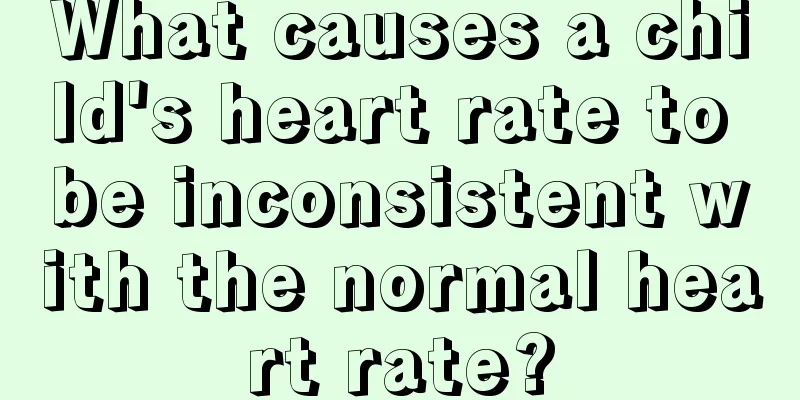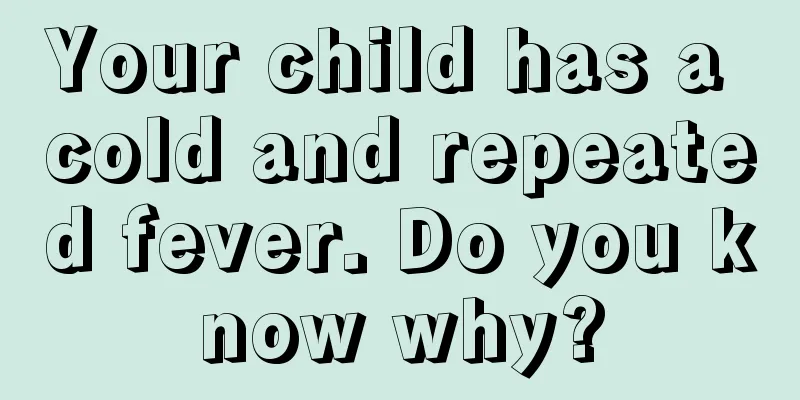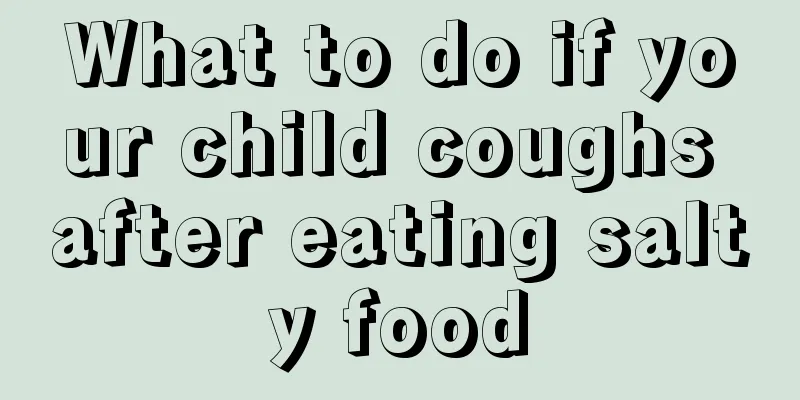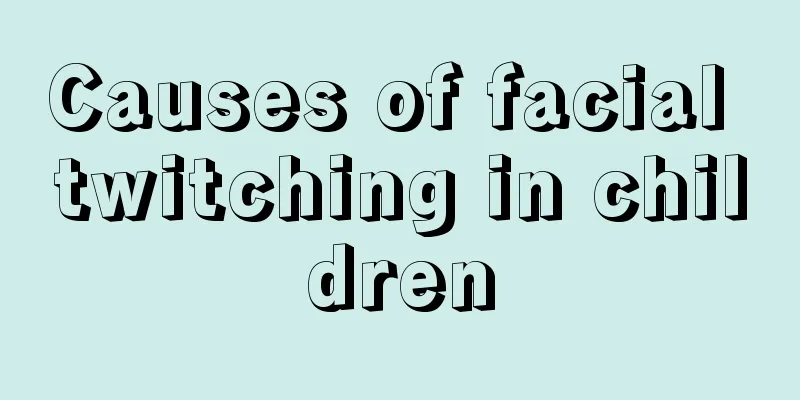What causes a child's heart rate to be inconsistent with the normal heart rate?

|
Children are the entire hope of the family, so the health of children is one of the concerns of their parents. Parents make efforts to vaccinate and check up their children on time. However, some parents find that their children's heart rate is a little low when they go to the hospital for check-up. The doctor says that this will cause physical discomfort. So what is the normal heart rate for children? What is the reason why children’s heart rate is inconsistent with the normal heart rate? Let the experts give us a detailed introduction below. The normal heart rate of children varies with age. A 5-month-old child's heart rate is considered normal if it does not exceed 160 beats/minute. Everyone's heart beats at a different speed. The number of heart beats is not only related to age and gender, but also closely related to posture, activity, mood, ambient temperature, etc. Therefore, a child's heart rate may vary within 24 hours. Generally speaking, the heart beats faster when exhaling and slower when inhaling, slower when lying down than when sitting, faster when exercising than when quiet, and faster when emotionally excited or crying than when calm and quiet. The younger you are, the faster your heart beats. To sum up, it can be considered that heart rate is an important indicator reflecting the health status of children. What is the normal heart rate for children of different ages? The average newborn baby is 120 to 140 times per minute. 120 times/minute at 1 year old, 110 times/minute at 3 years old, 100 times/minute at 5 years old, 90 times/minute at 7 years old, and can be reduced to 70 times/minute after 8 years old. When children have a fever, their heart rate often increases. For every 1°C increase in body temperature, the heart rate can increase by 10 to 15 beats per minute. If the heart rate increases significantly and cannot return to the normal range when the child is resting or sleeping, it often indicates the possibility of heart disease, especially when the child appears pale, refuses to eat, sweats or is irritable, or when the older child feels suffocated or has chest tightness, the child should be taken to the hospital for examination in time. What is the relationship between heart rate and breathing? The heart rate of a normal young child fluctuates greatly, and generally slows down as the child grows older. Young children have smaller fluctuations in their breathing rate, are younger, and have a faster breathing rate. The heart rate and breathing rate of children of different ages are in a certain proportional relationship. However, young children have a type of arrhythmia that is related to breathing. The heart rate increases when they inhale and slows down when they exhale. It is more obvious during deep breathing, fever, and convulsions. However, arrhythmia can be eliminated in young children by exercising or holding their breath. This kind of arrhythmia is a normal physiological phenomenon and does not require medication. The cause of sinus arrhythmia is that the vagus nerve in young children is not fully developed. Why do children's heart rates are faster than adults'? The younger you are, the faster your heart rate. Children's heart rate is easily affected by various factors. For example, their heart rate can increase significantly when eating, crying, moving, or being mentally stressed. When a child has a fever, their heart rate can increase by 10 to 15 beats per minute for every 1°C increase in body temperature. The reason why children's heart rate is fast and easily accelerated by various factors is mainly related to their imperfect nervous function. During the neonatal period, the innervation of the cardiac nerves retains the characteristics of the fetus, that is, the sympathetic nerves are dominant, the vagus nerve is not yet fully developed, and its excitability is relatively low. Because of the stronger sympathetic nerve activity, the baby's heart rate is faster and easier to accelerate. The heart after the age of 5 has the neural structure characteristics of an adult, matures around the age of 10, and the heart rate gradually approaches that of an adult. Secondly, because children have an active metabolism, various body systems require more blood supply, but children's myocardial contractility is weak and cardiac output is small. In order to meet the needs of the body, the heart needs to increase the number of beats. Therefore, children's heart rate is faster than adults. Therefore, when parents are taking care of their children, they should pay close attention to all abnormal behaviors of their children and discover their children's discomfort as soon as possible. If the heart rate is too different from the children's heart rate and the normal heart rate, then you should seek medical attention as soon as possible to help your child get rid of the discomfort and regain health and freedom! |
<<: What is the best treatment for rhinitis in children?
>>: The basic laws of children's growth and development
Recommend
How to nourish kidneys for children
Maybe many of our children are prone to various k...
What should I do if my baby has a cold stomach and diarrhea?
Many mothers have reported that their babies ofte...
How to take care of your baby's fever in summer
It is hot in summer and bacteria are active, so b...
8 criteria for a "good father" in the eyes of children
In most Chinese families, raising children is mai...
What medicine should children take for sneezing and runny nose
It is very normal for children to sneeze and have...
Is it normal to cough after roseola infantum?
Roseola infantum is a disease with a high inciden...
Does your child have blood on his butt after defecation?
Generally speaking, when children have blood in t...
What to do if the baby doesn't want to breastfeed
Most newborn babies are very dependent on breast ...
What should be paid attention to when blisters appear on children's bodies
The most common area for blisters to occur on chi...
Chalazion heals itself_Can a chalazion heal itself after it breaks
Chalazion is an eye disease caused by a deficienc...
What should I do if my baby catches a cold and has a fever in summer?
Cold is a common phenomenon in life. Generally sp...
How should I treat my baby who has a fever and poor appetite?
If the baby has a fever, it will affect the appet...
What to do if your one-year-old baby has hemorrhoids
For mothers, their babies are the treasures in th...
What should I do if I am allergic to a vaccination?
Getting vaccinations may seem like a hassle, but ...
Diseases that may be caused by bloodshot baby
The weather in spring is always hot and cold, and...









